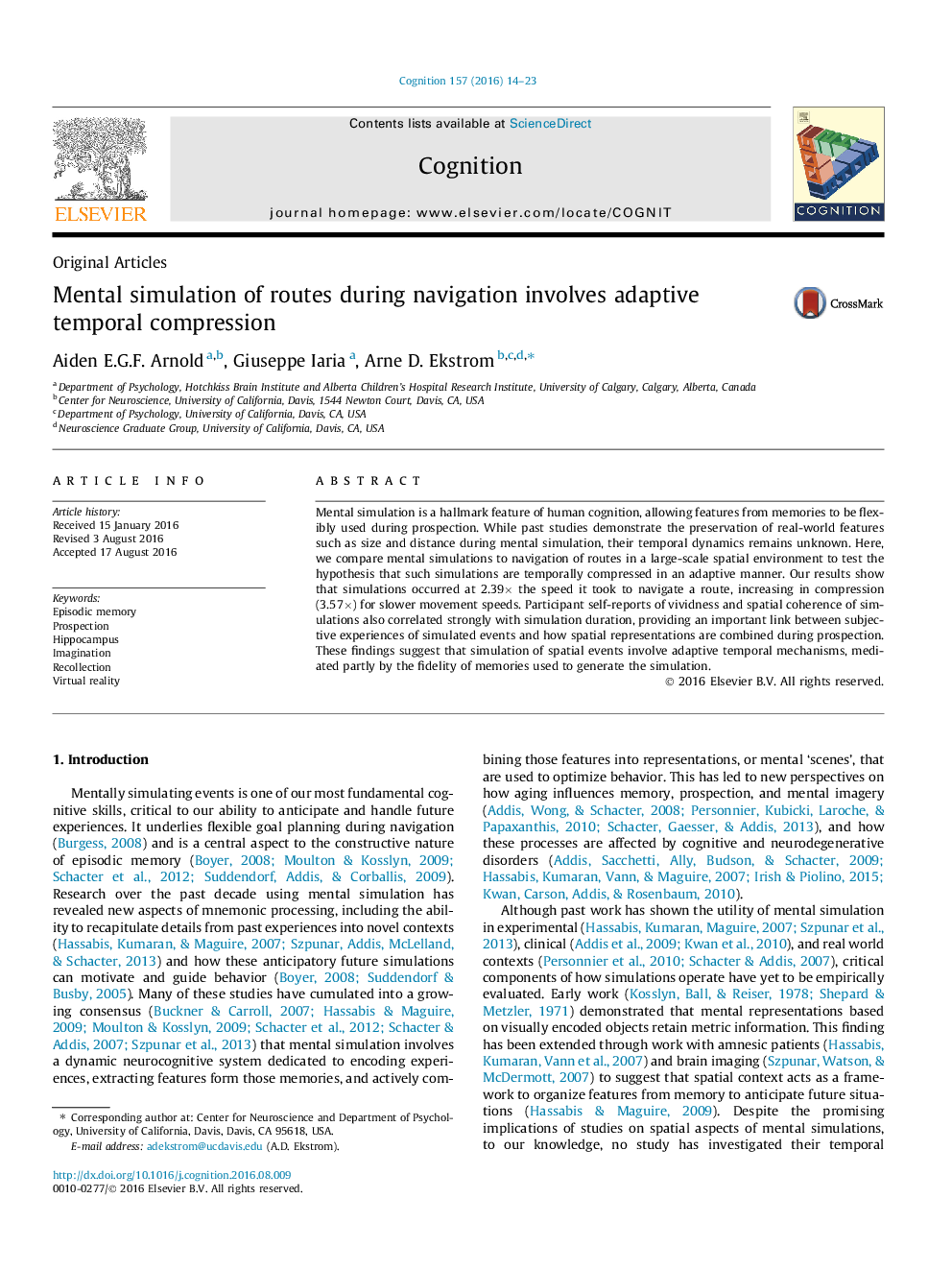| Article ID | Journal | Published Year | Pages | File Type |
|---|---|---|---|---|
| 956559 | Cognition | 2016 | 10 Pages |
Mental simulation is a hallmark feature of human cognition, allowing features from memories to be flexibly used during prospection. While past studies demonstrate the preservation of real-world features such as size and distance during mental simulation, their temporal dynamics remains unknown. Here, we compare mental simulations to navigation of routes in a large-scale spatial environment to test the hypothesis that such simulations are temporally compressed in an adaptive manner. Our results show that simulations occurred at 2.39× the speed it took to navigate a route, increasing in compression (3.57×) for slower movement speeds. Participant self-reports of vividness and spatial coherence of simulations also correlated strongly with simulation duration, providing an important link between subjective experiences of simulated events and how spatial representations are combined during prospection. These findings suggest that simulation of spatial events involve adaptive temporal mechanisms, mediated partly by the fidelity of memories used to generate the simulation.
